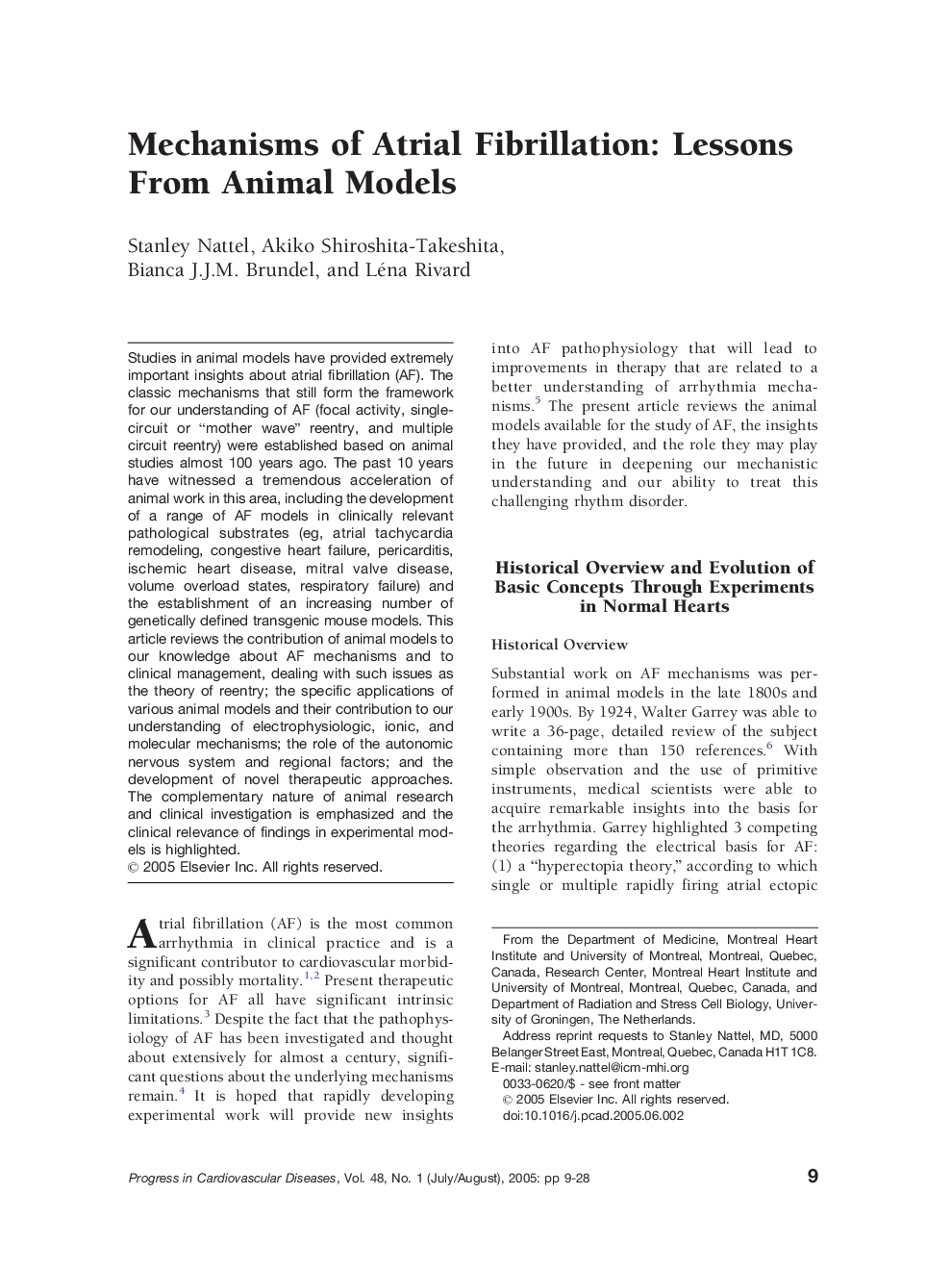| Article ID | Journal | Published Year | Pages | File Type |
|---|---|---|---|---|
| 9179001 | Progress in Cardiovascular Diseases | 2005 | 20 Pages |
Abstract
Studies in animal models have provided extremely important insights about atrial fibrillation (AF). The classic mechanisms that still form the framework for our understanding of AF (focal activity, single-circuit or “mother wave” reentry, and multiple circuit reentry) were established based on animal studies almost 100 years ago. The past 10 years have witnessed a tremendous acceleration of animal work in this area, including the development of a range of AF models in clinically relevant pathological substrates (eg, atrial tachycardia remodeling, congestive heart failure, pericarditis, ischemic heart disease, mitral valve disease, volume overload states, respiratory failure) and the establishment of an increasing number of genetically defined transgenic mouse models. This article reviews the contribution of animal models to our knowledge about AF mechanisms and to clinical management, dealing with such issues as the theory of reentry; the specific applications of various animal models and their contribution to our understanding of electrophysiologic, ionic, and molecular mechanisms; the role of the autonomic nervous system and regional factors; and the development of novel therapeutic approaches. The complementary nature of animal research and clinical investigation is emphasized and the clinical relevance of findings in experimental models is highlighted.
Related Topics
Health Sciences
Medicine and Dentistry
Cardiology and Cardiovascular Medicine
Authors
Stanley Nattel, Akiko Shiroshita-Takeshita, Bianca J.J.M. Brundel, Léna Rivard,
